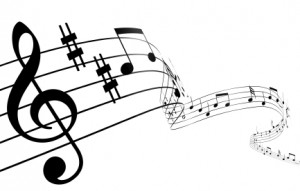The link between classical music and learning is well established. It has been shown to enhance certain forms of intelligence, like verbal and spatial abilities.
And teachers who regularly play Mozart while students are practicing math skills report that it helps with concentration and attentiveness.
But did you know classical music can have a positive effect on classroom management?
Having classical music playing in the background when students enter the classroom can reduce tension and anxiety, making them less inclined to act up. It also builds a subconscious association between the sound of the music and behavior that is conducive to learning.
A study on heart patients found classical music to have the same stress reducing benefits as the drug Valium. The study didn’t imply that the music made them sleepy, just more relaxed.
In 2004, classical music was piped into London Underground train stations and into certain dangerous neighborhoods. As a result, incidences of vandalism, assault, and robberies dropped in those areas by as much as 37%.
Have you stayed at a hotel recently? It seems more and more of them are playing classical music as you first enter your room. They want you to associate feelings of relaxation and peace with a stay at their hotel.
Stores, too, are using music and an appeal to our sense of smell to enhance our buying experience. Abercrombie and Fitch, for example, works especially hard at this. They want to build positive and hip associations with the act of walking into their stores.
Others, like Starbucks, use music to create an atmosphere that represents the image they want to convey in the customer’s mind.
What associations do your students have when entering your classroom? A chaotic, noisy, or frenzied experience will increase tension, encourage misbehavior, and negatively affect attentiveness.
The very act of walking into certain classrooms can trigger feelings of restlessness in students. Think of a Walmart store on the day after Thanksgiving. Chaotic situations cause people to behave poorly and do things they wouldn’t normally do.
In the midst of restless energy, students are not ready for learning, and teachers have an uphill battle before the day has even begun.
Classical music is an easy way to start building positive associations with entering the classroom. As soon as students hear Bach or Vivaldi wafting from the doorway, they know it’s time for learning.
But it’s not something you do just once in a while. It must be done every day in conjunction with a specific morning routine.
It’s important to choose music without big crescendos and startling transitions (avoid Wagner). On the other hand, I’ve found tracks specifically compiled for relaxation to be uninspiring. The best classical music for the classroom are the popular works of Mozart, Bach, Tchaikovsky, and, my personal favorite, Vivaldi.
Download what you like at iTunes or you can find an excellent series called 25 Classical Favorites at Amazon.com. It’s a great compilation for around four dollars.
Put the music on as soon as you arrive in the morning and listen while preparing for the day. It will put you in a productive mood and remind you of the feeling tone you want to promote in your classroom.
Never let your students forget that your classroom is a place for learning. Besides having a potent calming effect, classical music is a perfect reminder.
If you haven’t done so already, please join us. It’s free! Click here and begin receiving classroom management articles like this one in your email box every week.


I’m going to try it with my preschool students. I’ll let you know how it works.
Great! I look forward to hearing about it.
Michael
Hi Michael,
I have used this strategy for awhile. Although I don’t use classical music, I have been using soft piano music. It has a wonderfully, calming effect on my classroom.
Michelle
Hi Michelle,
Thanks for sharing! That’s good to know.
Michael
I play music daily in my 1st-3rd Montessori classroom. I get compliment from all guests and administration everything they enter our room. My only concern, is that the cd/songs listed are actually…too upbeat for my students. I find the many of the nighttime lullabies cds are the best. You’d think it could make them…sleepy….but as a bright little one of my said, “It’s our magic medicine for staying on-task.”
I agree with what you say about music with crescendos, and for that reason Beethoven isn’t such a good choice except for his 6th Symphony (Pastoral). And I’ve found Mozart Piano Sonatas aren’t conducive to learninng because most of them are VERY hyper. However, I have found Mozart’s Piano Concertos are perfect. I can play all 27 of them and they can last a whole school day!
I played classical Christmas music in my classroom for large chunks of the day during all of December. It had a beautiful effect. Students entering in the morning were cheerful. Adults that visited smiled and commented on how nice it was. AND, no matter how quiet I turned the volume,my students (grade 1-2) made themselves quiet enough to hear it. I found they also worked better independently and had less questions for me! I have spent a lot of time over the Christmas break compiling a collection of CDs to play in the new year 🙂
Awesome Penny! Way to go! Thanks for sharing.
:)Michael
I’ve been playing music in my classroom since my first year teaching, and I switched over to classical and baroque music after taking a Quantum Learning workshop. I went ahead and paid the money to subscribe to Pandora Radio on the internet because it’s one of the few websites with music that hasn’t been blocked on the school network. My Algebra I students are especially fond of the classical guitar station and also the instrumental radio station, which sometimes plays beautiful instrumental versions of the Disney movie themes they’re so familiar with.
Thanks for sharing, Jennifer! When I write, Pandora is on in the background.
Michael